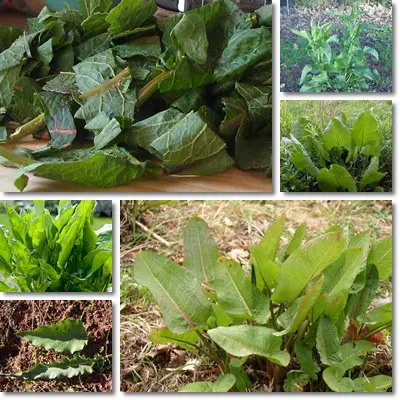Today’s article is about a popular green leafy vegetable native to Central and Southern Europe: patience dock (Rumex patientia). Garden patience or patience dock is a green leafy herb from the buckwheat family. It is a highly versatile culinary vegetable, but also a treasured medicinal herb. Garden patience is an excellent natural remedy against constipation, promotes recovery after diarrhea episodes, despite its mild laxative effects and has proven useful in easing gastroparesis symptoms.
Moreover, it is known to stimulate uterine contractions, aid digestion and makes an excellent tonic and detox food because of its diuretic properties which promote the elimination of toxins from the body. Its dark green color indicates the presence of generous amounts of vitamins A and K, recommending it for eye and bone health in particular. Vitamin K also has anti-hemorrhagic properties and helps prevent nosebleeds and easy bruising. Patience dock has a moderately bitter, green leafy vegetable taste.

What is patience dock and what does it look like?
Patience dock is a flowering herb of the buckwheat family and a very popular spring vegetable. It emerges in early to mid-spring as a group of deep green, large, elongated leaves with a thick stalk, emerging from above-ground. The plant, consisting of tightly-knit bunches of leaves, is picked by late May and either added to broths, made into a pureed side-dish alongside polenta or used to make the popular stuffed rolls of meat known as ‘sarmale’. Alternatively, patience dock leaves can be stuffed with rice and raisins or plums or other vegetables – a popular vegetarian recipe primarily used during periods of fasting.
What does patience dock taste like?
The immature vegetable has a mildly bitter, leafy greens taste. However, if left to mature, patience dock becomes increasingly bitter. Moreover, the older the leaves, the larger and less tender they are. Usually, the darker the leaves, the more mature and bitter the plant. The cooked leaves (boiled) have a slight astringency to them. The vegetable occurs spontaneously in back gardens in Central and Southeast Europe from March up until September. Many varieties of the Rumex genus reach heights of almost 2 meters.
What about health benefits? Although it is poorly studied compared to the more popular so-called ‘superfoods’, patience dock enlists a variety of impressive properties and health benefits, most of which come from its culinary use. See below the top 7 reasons why garden patience is good for you.

What are the benefits of Patience Dock?
Excellent detoxification food
Patience dock is a powerful diuretic, making it ideal for a spring detox regimen because it favors toxin elimination. In addition to this, it is a great tonic because it supplies the body with important nutrients such as iron, magnesium, small amounts of potassium, calcium and incredible amounts of vitamins A and C, which promote recovery from potential nutritional deficiencies developed in winter time.
Remember: a detox regimen isn’t equal to a weight loss diet and doesn’t mean limiting your food choices to fruit juices, greens alone or empty your pockets to purchase exotic foods. The best detox diet is when you increase your intake of fresh, colorful fruits and vegetables, preferably grown locally and organically, while reducing your intake of highly processed foods, sodas, alcohol, sweets and candy. It’s basically eating healthy, nutritious foods and letting your body work for you. It’s not the foods that do the detoxing, but your liver and kidneys. Eating right just allows them to do their job well. Spinach, carrots, leek, spring onions and patience dock are great options of spring vegetables to enjoy.
Powerful natural laxative
In moderate amounts, patience dock has mild to strong purging effects, depending on the person. If your diet lacks green leafy vegetables such patience dock altogether, then you might want to avoid eating an entire serving of patience dock at once because it might cause loose stools and diarrhea.
For those accustomed to a healthy intake of greens and leaves and all sorts of plant foods, patience dock relieves constipation (sometimes in a matter of hours) and, if consumed regularly throughout spring, it helps cleanse the intestines and set a normal pace to digestion by regulating intestinal transit. Patience dock seeds mash are also a highly efficient diuretic and laxative.
Promotes faster recovery after diarrhea
Being a good source of magnesium and potassium (both electrolytes), patience dock helps restore the body’s natural fluid balance, lost as a result of dehydration due to diarrhea, and regulates both digestion and intestinal transit.
100 g of raw patience dock leaves contains 20% of the RDI, recommended daily intake of magnesium and only around 7% of the RDI of potassium, but one medium serving of anything made out of the plant will most likely add up to around 250-300 g of dock leaves. The reason for this is that cooking garden patience leaves will reduce them to 1/4 of their initial volume.
Prevents scurvy
About 100 g of patience dock leaves contains around 80% of the RDI of vitamin C which is equivalent to optimal protection against scurvy, a disease caused by severe vitamin C deficiency.
Boosts immunity and reduces inflammation
The powerful antibacterial and anti-inflammatory properties of patience dock derive from the plant’s high vitamin C content, comparable to that of oranges.
- Oranges vitamin C content: 100 g contains 53.2 mg of vitamin C (90%)
- Patience dock vitamin C content: 100 g contains 48.0 mg of vitamin C (80%)
However, cooking the leaves greatly reduces their vitamin C content. Fortunately, young patience dock leaves make great salad leaves and an even more delicious pizza topping. Home-made chicken breast, tomato and bell-pepper pizza with chopped patience dock leaves topping is downright amazing!
Great for eyesight and skin
Traditional medical practices used crushed patience dock leaves or stalk poultices to treat various skin problems such as impetigo (abscesses on the skin, especially around the mouth, caused by a strong bacterial infection). Their efficiency may be owed to patience dock having both a high vitamin C content (antibacterial properties) and an incredible vitamin A content.
Vitamin A (4000 IU) is essential for keeping skin, hair and mucous membranes healthy. In skin care products it often appears under the name ‘retinol’. At the same time, vitamin A supports eye health, both improving day vision and preventing night blindness. Around 100 g of raw patience dock contain about 5 x the RDI of vitamin A.
Potential benefits for gastroparesis
Eating patience dock is potentially good for gastroparesis, helping improve the condition (slight paralysis of the central digestive system nerve which regulates digestion and bowel movements). Patience dock appears to stimulate regular contractions at the level of the intestinal wall and thus may help improve disorders affecting the digestive system. Because it also stimulates uterine contractions, it might be best to avoid eating patience dock during pregnancy. Like chamomile, patience dock can potentially cause a miscarriage.
Conclusion
Overall, patience dock makes an excellent spring vegetable, ideal for shedding toxins that may have accumulated during winter. While eating the leaves has its benefits, it is best to stay away from garden patience-based supplements because you never know what they may actually contain. Also, if you have a predisposition towards blood clotting, it’s best to watch your intake of green, leafy vegetables such as patience dock, kale, spinach and more because of their high content of vitamin K which promotes blood clotting.
